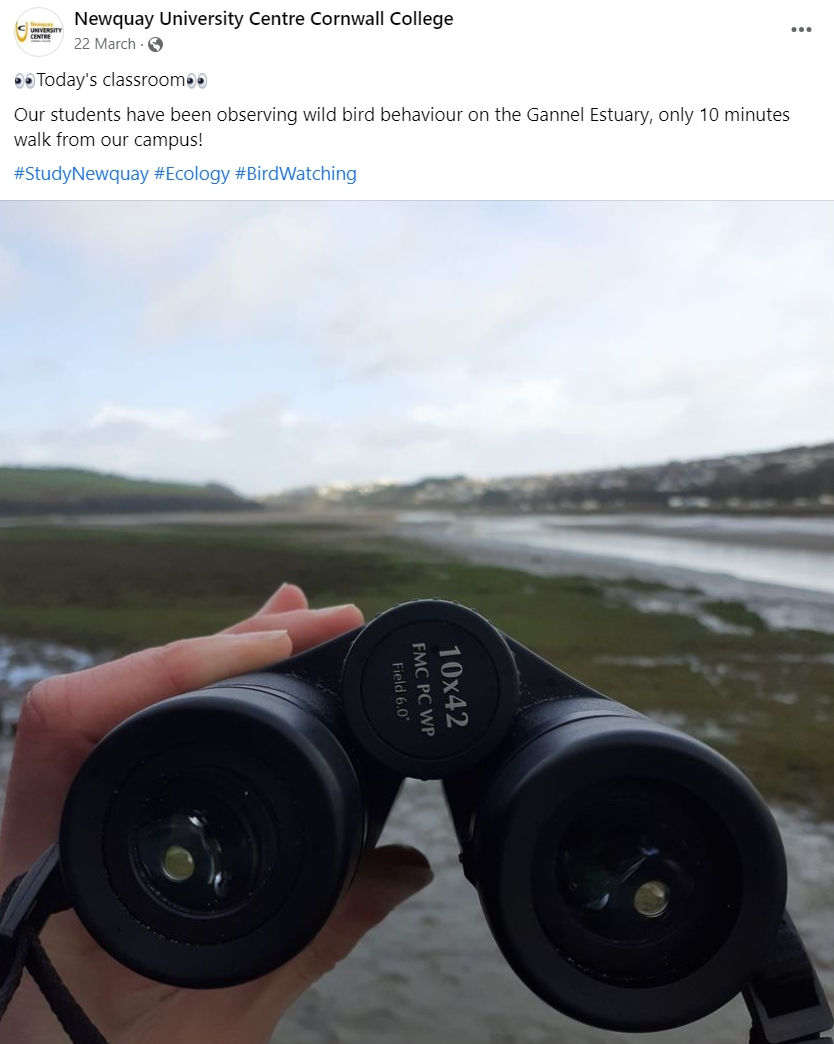Year 2 will usually consist of the following 20 credit HE level 5 modules:
Core modules:
Vertebrate Zoology and Conservation (20 credits)
Specifically looking at terrestrial vertebrates, this module will further look at the anatomy and physiology of various animal examples and interrelate all body systems. The module will go on to relate the anatomy and physiology to the life history and reproductive strategies of these animals, and adaptations to particular environments.
Global Conservation Issues (20 credits)
This module explores the relationship between human societies and the natural environment, focusing on the consequences of anthropogenic activity on biodiversity. Students will explore the mechanisms being developed to mitigate the negative consequences of human activity on the natural world and understand the policies and legislation put in place to support this.
Population Genetics and Community Ecology (20 credits)
Continuing from the introduction to ecology and zoology modules in the first year, this module will analyse the interactions between population dynamics and ecosystem functioning, employing current software to predict population changes. Factors affecting population size and viability will also be investigated and related to genetic diversity and its importance to practical conservation strategies.
Zoological Conservation in Practice (20 credits)
Students will be encouraged to conduct a number of work experience hours in a relevant work placement or as a part of a particular local/national census or survey, which allows direct contact with conservation in action and will build on practical skills developed in the course. This module will also look at the role of various organisations in conservation, the importance of legislation, and utilise current research for examples of good practice.
Research Methods and GIS for Zoology (20 credits)
This module equips students with the skills required to complete independent research for an honours project through a program of lectures and seminars on research design, methodologies, literature reviews, referencing, “writing-up”, data analysis and critical thought processes. The module will also look at specific techniques and tools used for research in zoology and conservation, in particular Geographical Information Systems (GIS) and their application.
Optional modules – Choose one 20-credit module from the following four modules:
Primate Behavioural Ecology and Conservation (20 Credits)
Our nearest cousins, the primates, display fascinating and complex behaviour, giving us insights into the development of our own behaviour and society. Through this module, students explore some of the fundamentals of behaviour as applied to primates, including how they learn and behave in natural and captive situations. Part of the assessment of this module has students exploring the effects of captivity on behaviour and how these can be mitigated with enrichment schemes. Newquay Zoo has an extensive collection of primates, providing a wonderful opportunity to develop practical skills in observing and analysing their behaviour, and using this knowledge to inform conservation strategies.
Advanced Ecology and Survey Techniques (20 Credits)
This module looks at the physiology and ecology of vertebrates and invertebrates in relation to appropriate survey techniques. The module aims to illustrate threats to species both in the UK and worldwide, and the methods of species and habitat protection.
Marine Vertebrate Biology and Conservation (20 Credits)
This module takes an applied approach to exploring the biology and conservation of this vast range of species. Marine vertebrates inhabit a world which is alien to our own, operating under a different set of physical conditions, and this makes finding out even the most fundamental information about them extremely challenging. As a result, researchers have been using ground-breaking technology to study these elusive animals. Students learn about these techniques as we explore the functional biology and behaviour of a range of marine vertebrate species. Many marine vertebrate species are facing increasing conservation pressure, so it is also important that students develop their knowledge of population biology and conservation action plans. Newquay’s coastal location provides excellent opportunities to study at least one species – the Grey seal Halichoerus grypus in the wild.




